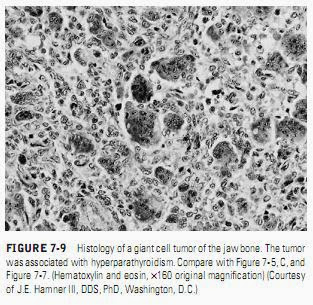Pseudoepitheliomatous hyperplasia is a rather common exuberant oral epithelial response in which the rete pegs are extended deeply into the underlying connective tissue in an irregular fashion. Keratin pearl formation may be prominent, but other signs of cellular atypia characteristic of carcinoma
are absent. Neutrophilic infiltration about the elongated rete pegs is also prominent, in contrast to carcinoma. Sections may show isolated clumps of epithelial cells in the depth of the lesion, where the plane of sectioning cuts across long narrow rete pegs. However, true neoplastic invasion does not occur.
Clinically, lesions exhibiting pseudoepitheliomatous hyperplasia may be indistinguishable from epidermoid carcinoma, and if unnecessary surgery and radiation are to be avoided, the pathologist diagnosing the biopsy specimen must be familiar with the existence of this bizarre type of epithelial hyperplasia that is relatively common in the oral cavity. On occasion, experienced oral pathologists may be hesitant in deciding whether a particular lesion features this change or whether it is actually a carcinoma, despite the fact that morphometric analysis of the two lesions clearly differentiates them on the basis of size and shape of the squamous epithelial nuclei. Two oral lesions—granular cell tumor of the tongue and keratoacanthoma of the lip (both of which are described later in this chapter)—may exhibit pseudoepitheliomatous hyperplasia along the periphery of the lesion, and errors of diagnosis in which these lesions are wrongly identified as carcinoma are unfortunately not uncommon. The submission of a biopsy specimen that includes the entire lesion and the accurate documentation of the history and clinical appearance of the lesion can significantly help the pathologist recognize pseudoepitheliomatous hyperplasia. This change is also commonly seen in epulis fissuratum, in granulomatous inflammatory lesions attributable to tuberculosis or deep invasive fungi, in the gingival sulcus in cases of periodontitis (to a lesser degree), and (occasionally) in association with tumors such as malignant lymphoma. The pathogenesis of pseudoepitheliomatous hyperplasia has not been elucidated; the change may be related to the production of cellular growth factors by adjacent cells.
Like other inflammatory hyperplasias, pseudoepitheliomatous hyperplasia is cured by local excision, provided that the chronic initiating irritant is also eliminated.
